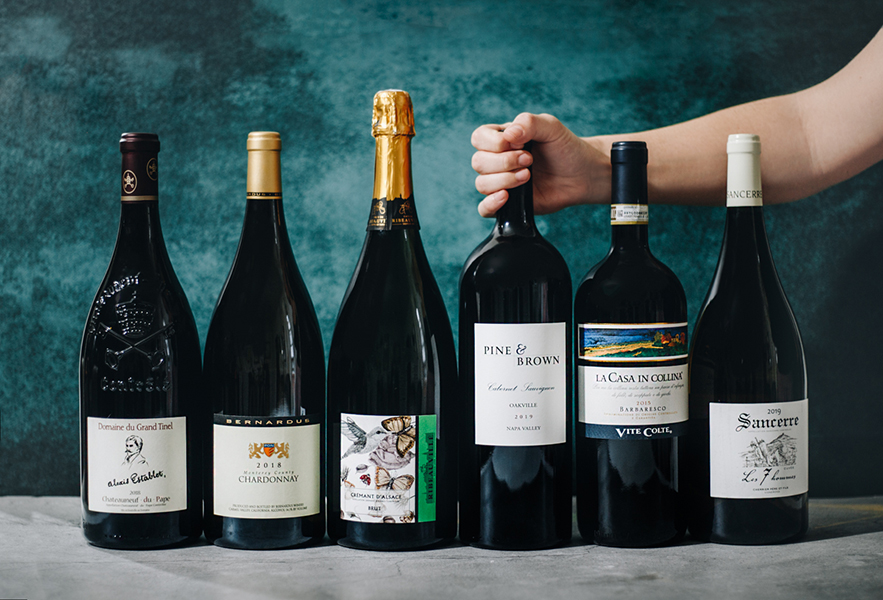 We’re all familiar with standard-sized 750 milliliter (ml) wine bottles, so what is it about large-format bottles that are so appealing to both the casual wine drinker and connoisseur alike?
We’re all familiar with standard-sized 750 milliliter (ml) wine bottles, so what is it about large-format bottles that are so appealing to both the casual wine drinker and connoisseur alike?
(Other than the obvious answer, more wine!)
Any wine that comes in a bottle larger than the standard 750 ml size can be considered large-format. The following list will explain their different sizes:

1.5 L – Magnum: equal to two standard-sized bottles.
3 L – Double Magnum: equal to two Magnum bottles. If the bottle is *Burgundy-shaped, it is referred to as a ‘Jeroboam.’
4.5 L – Jeroboam: equivalent to six standard-sized bottles. While it may seem confusing, since it holds the same name as a Burgundy-shaped Double Magnum, the Burgundy-shaped 4.5 L is referred to Rehoboam.
6 L – Imperial Magnum, or Methuselah for Champagne: holds 6000 ml, which is equivalent to eight standard-sized bottles.
9 L – Salmanazar: holds 9000 ml, which is equivalent to twelve standard bottles.
12 L – Balthazar: holds 12,000 ml, which is equivalent to sixteen standard bottles.
15 L – Nebuchadnezzar: holds 15,000 ml, which is equivalent to twenty standard bottles.
The Appeal of Large-Format Wines

There are two categories of large-format wine bottles. The first falls under the heading of ‘Bulk Wines.’ Most wine retailers carry inexpensive Magnum bottles, as well as jugs of wine holding three, four, or five liters. These wines usually cost less than purchasing more than one standard-sized bottle. They serve the purpose of providing consumers with the greatest amount of wine for the least amount of money.
The second category of large-format wines falls under the heading ‘Fine Wines.’ These bottles generally have a greater cost (sometimes significantly) than purchasing more than one standard-sized bottle. There are a few reasons why. First, the quality of wine inside them is far better than that of the ‘Bulk Wines.’ Second, large-format fine wines are not usually produced in large quantities, making them quite rare – in fact, as the size of the bottle increases, its market availability decreases. Due to this rarity, and with it, a sense of exclusivity and prestige, these wines are among the most collectible in the world.
The third reason fine wines in larger bottles are priced higher is because they age more slowly than those in standard bottles. Meaning, since there is a greater amount of wine in a Magnum bottle than a regular one, yet the amount of air trapped in the neck of the bottle is basically equal in both, less surface area of the wine in large-format bottles comes into contact with the air. This causes the wine to develop at a slower rate over a longer period of time. The final reason has less to do with the wine itself, and more to do with the human ego. No matter the venue, a large format bottle of fine wine will turn heads and grab people’s attention.
Great deals on grandiose bottles of wine are usually few and far between, so if you have the opportunity to acquire them at a discount, jump at it! Whether you’re looking for a gift, a worthy addition to your wine cellar, or simply a bottle with which to impress, large-formats are a unique and amazing part of wine culture.
One place to find large-format bottles is in our Magnum Marathon, which occur periodically through the seasons.
*Different bottle shapes are referred to by different names. Learn the names of the bottle styles in our post, Wine Bottle Shapes and Sizes.



